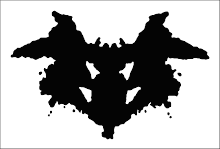In a comment to this post, please discuss each of the graphs below. Be sure to address the questions under each graph. Please don't copy the questions or number your answers, rather, you should write a paragraph or two in complete sentences so your reader knows what you are talking about. Be sure to sign in as "anonymous" but put your first name and last initial in the post so I know to whom to give the credit. If you have any questions please e-mail me. Review the "how to e-mail a teacher" post on my blog before you send your e-mail.(click on the graphs to enlarge)
I strongly suggest you write the comment in Word or another program and then copy and paste it into the comment section below. This way, if the comment doesn't go through or is accidentally deleted you'll have a record of your work. Please also remember that I have to approve all comments, so it may take a while for it to show up on the blog. You don't need to resubmit it over and over.
Click on graphs to enlarge.
 |
| Hair Length v. Height - Correlation Coefficient = -0.47 |
What can we see from the above scatter plot of hair length vs. height? Is there a correlation? How strong is it? If so, is it positive or negative; strong or weak? What information about the students in our class does this graph give you? Are there a few "outliers" or extreme data points that seem unusual? If you throw them out of the data set what does the correlation look like? What other information would be helpful to interpret the data?
 |
| Height v. Shoe Size - Correlation Coefficient = +0.73 |
Above is the data we collected about our shoe sizes vs our heights. Can you see a relationship? Is there a correlation? If so, is it positive or negative? How strong is it? Does shoe size cause height to change? Does height cause shoe size to change?
 | |
|
Finally, the above graph shows the relationship between shoe size and hair length. Is there a correlation? If so, is it positive or negative? How strong is it? What third variable which is not shown on the graphs might be causing the relationship between shoe size and hair length? Does correlation imply causation? Why or why not?
And a video about ice cream and polio...

